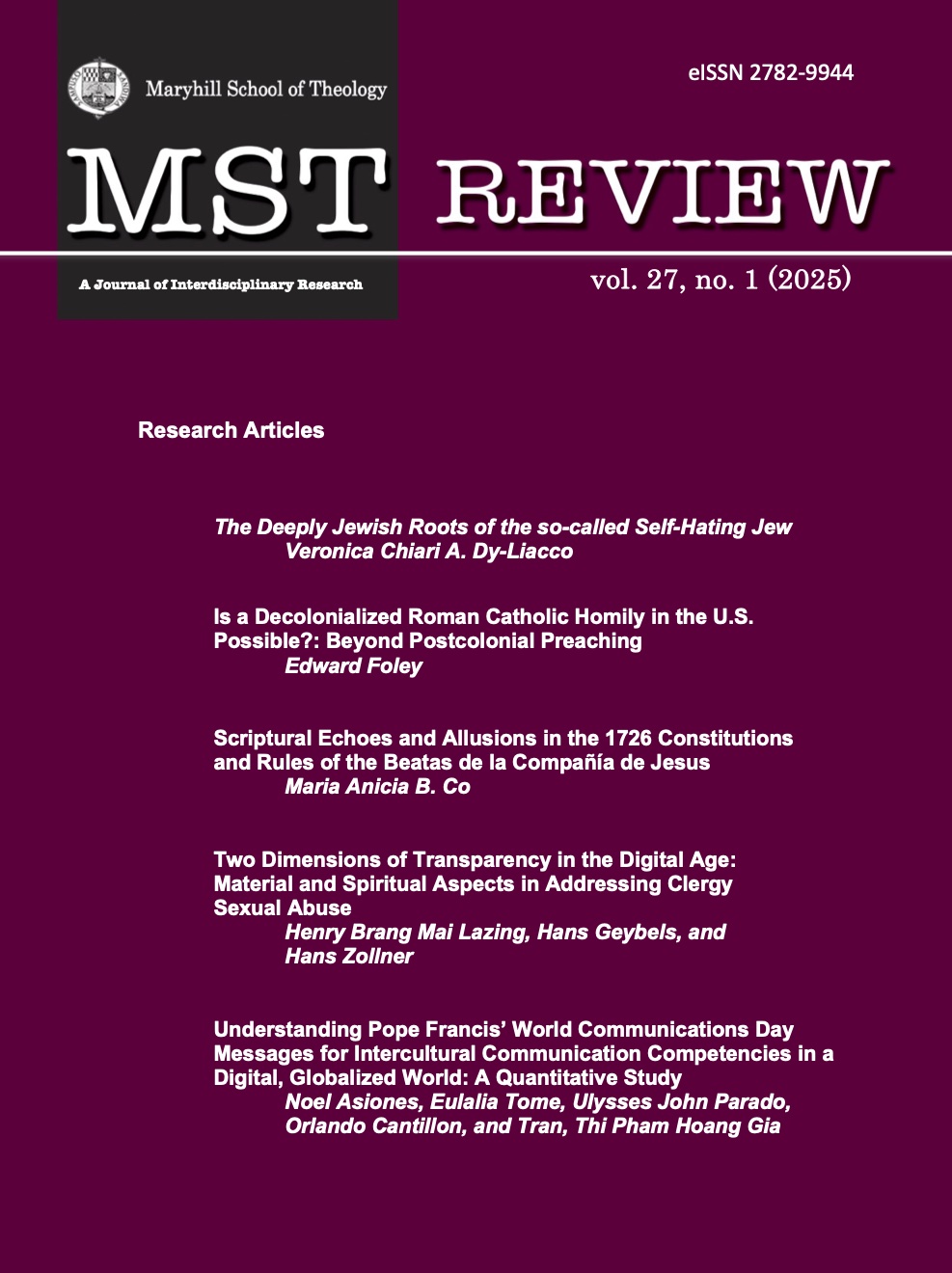Two Dimensions of Transparency in the Digital Age
Material and Spiritual Aspects in Addressing Clergy Sexual Abuse
Keywords:
Catholic Church, Clergy Sex Abuse, Digital Media, Marshall McLuhan, Safeguarding, TransparencyAbstract
In addressing the clergy sexual abuse (CSA) crisis, transparency has become a major theme. From the perspective of media studies, and particularly through dialogue with the ideas of Canadian media thinker Marshall McLuhan, this research identifies two dimensions of transparency: static and dynamic. Static transparency emphasizes information disclosure, legal standards, policies, and procedures, adopting a zero-tolerance and straightforward approach to combating corruption. This dimension can be seen as fundamentally representing the structural aspect of transparency. Conversely, dynamic transparency embodies more the spiritual character of transparency. It is fluid, multidimensional, communicative, and dialogical. Rather than focusing on systems and structures, it prioritizes the personal element, conveys symbolic meanings, and considers contextual and proportional factors. While both dimensions of transparency can be useful in addressing CSA, they also have drawbacks. This research concludes that the effectiveness of applying the two dimensions of transparency in addressing CSA depends on the extent to which the needs of victims and survivors are prioritized.
Downloads
Published
How to Cite
Issue
Section
License
Copyright (c) 2025 Henry Brang Mai Lazing, Hans Geybels, Hans Zollner

This work is licensed under a Creative Commons Attribution-NonCommercial-NoDerivatives 4.0 International License.

